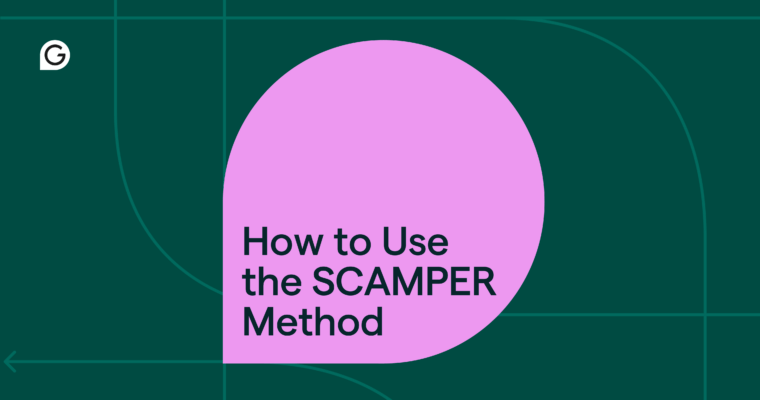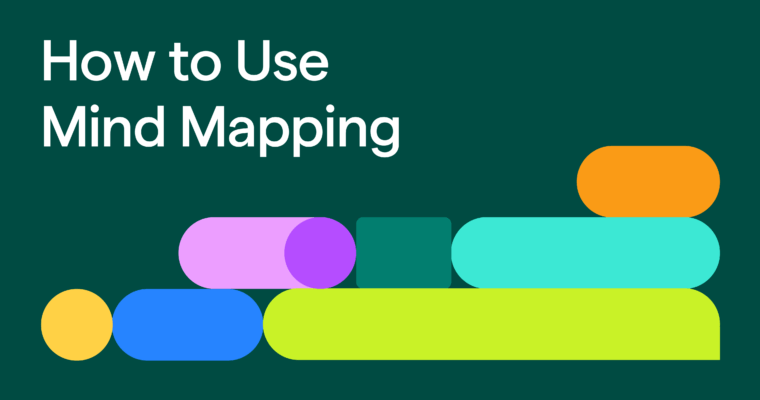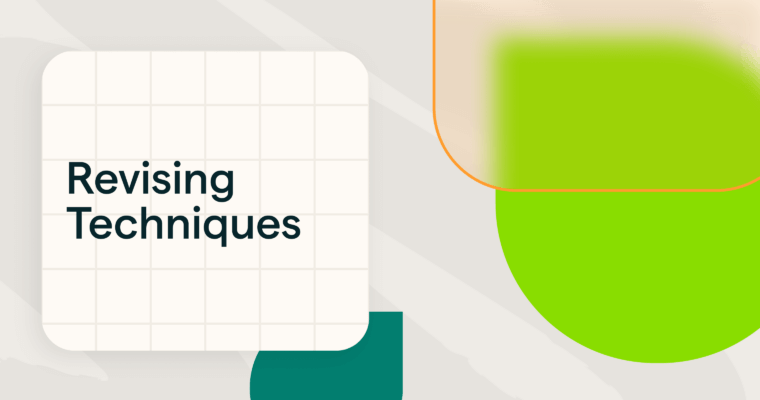
Key takeaways
- Reverse brainstorming flips the traditional brainstorming process on its head by asking how to cause a problem, then inverting those answers into solutions.
- It helps writers challenge assumptions, uncover hidden issues, and develop creative ways to improve drafts or ideas.
- The method is effective for breaking through creative blocks, strengthening writing’s structure, and improving clarity.
- Reverse brainstorming is effective in writing, design, and planning; essentially, it’s effective anywhere you’re trying to enhance clarity, engagement, or structure.
You’ve probably had brainstorming sessions that went nowhere. After you’ve generated dozens of ideas, everything starts to sound the same, and you lose momentum. When that happens, turning the problem upside-down can get you back on track. There’s a name for this strategy: reverse brainstorming.
Instead of asking “How can I solve this?” reverse brainstorming asks: “How could I make this worse?” By exploring failure first, you uncover assumptions and weaknesses that traditional brainstorming often misses. Then, by flipping those negative ideas, you arrive at stronger, more innovative solutions.
This guide explains what reverse brainstorming is, how it works, and how you can use it to improve your writing process. Whether you’re revising an essay, refining a marketing concept, or developing a story plot, reverse brainstorming pushes you to explore your topic from a different perspective, which can lead to valuable insights.
Table of contents
- What is reverse brainstorming?
- Why use reverse brainstorming?
- How to use reverse brainstorming
- Reverse brainstorming examples
- Reverse brainstorming vs. other brainstorming techniques
- Best practices for reverse brainstorming
- Common mistakes to avoid
- How Grammarly can help you reverse brainstorm
- Reverse brainstorming FAQs
What is reverse brainstorming?
Reverse brainstorming is a way of deliberately exploring how to cause a problem before solving it. Instead of asking, “How can I fix this paragraph?” you ask, “How could I make it worse?” The answers often expose weak points or hidden assumptions you can then address.
For example, if you ask, “How could I make my introduction boring?” you might answer, “Start with a cliché” or “Use vague language.” Flipping those insights produces clear solutions: Avoid clichés, use specific phrasing, and open with an original hook.
This technique stems from the field of lateral thinking, which encourages people to look at challenges from unconventional angles. It’s particularly useful in writing and communication, where problems are often rooted in clarity, structure, or tone.
Learning to think outside the box is central to creative brainstorming. Reverse brainstorming gives you a structured way to do exactly that by intentionally exploring the “wrong” path to find the right one.
Why use reverse brainstorming?
Reverse brainstorming is especially helpful when you feel like you’re hitting roadblocks in your brainstorming or when you need a new perspective on a recurring issue. Here are a few specific ways reverse brainstorming can help you through these difficulties:
It challenges assumptions
When you deliberately imagine how something could fail, you can find hidden expectations. Writers, planners, and, really, anybody tasked with completing an objective don’t assume they’ll fail; they assume they’ll be successful. Because of this, they often don’t think of how they could fail, which reverse brainstorming illuminates.
Example: If you ask, “How could my essay about changing weather patterns since 2000 confuse readers?” you might discover assumptions about what your audience already knows about common weather patterns at the turn of the 21st century.
It uncovers things you may have missed
Negative thinking reveals weak points that traditional brainstorming often overlooks, as you typically don’t approach your work from a negative viewpoint. Doing so can reveal issues that would turn readers off.
Example: Asking “How could this article lose readers halfway through?” might uncover missing transitions or an inconsistent tone.
It reframes stale ideas
Flipping a question helps you escape repetitive thinking. This breaks your thought pattern by highlighting ideas and elements that don’t work.
Example: Instead of asking “How can I make my story exciting?” try asking “How could I make it predictable?” The answers, like “use clichés” or “telegraph the ending,” become cues for what to avoid or improve in your draft.
It helps test and prepare drafts
By imagining failure, you can anticipate risks before publishing or presenting your work. Essentially, this stress-tests your work against various pitfalls.
Example: Asking “How could this client proposal fall flat?” leads to preventive fixes like clearer visuals, stronger data, or more compelling calls to action.
When to use reverse brainstorming
Reverse brainstorming is effective at several points in the writing process:
- During prewriting: It helps identify issues before outlining. A writer might ask “How could my argument collapse?” and reveal missing evidence or a biased tone.
- When brainstorming feels repetitive: If your team keeps suggesting the same ideas, exploring what not to do can open new directions.
- While revising: Reverse brainstorming can help reenergize a flat draft by identifying dull sections or clichés to eliminate.
- Before publishing: It doubles as a stress test for your writing or content strategy.
How to use reverse brainstorming
Follow these five steps to apply reverse brainstorming to your writing or creative work.
Step 1: Define the problem clearly
Start by writing a precise question or challenge. The more precisely you define the challenge, the more effectively you can explore it through reverse brainstorming.
Example: “How could I confuse my reader?” or “How could I guarantee my email gets ignored?”
A focused problem statement produces better insights because these insights are tailored to the problem statement. If the problem statement is vague or generic, the insights will be, too.
Step 2: Ask the reverse question
Reframe your problem to emphasize failure. What would failure look like? After identifying this, ask a question that puts failure front and center.
Example: Instead of “Make this article engaging,” try “How could I make this article frustratingly difficult to read?”
This phrasing invites humor and creativity, which can lead to more revealing ideas. Now that you’re trying to make the article frustratingly difficult to read, you reveal exactly what “frustratingly difficult to read” looks like.
Step 3: Brainstorm negative ideas
List every way the problem could worsen. Don’t censor yourself, because wild or unrealistic ideas often inspire the best solutions.
Example negatives: “Use passive voice,” “Ignore transitions,” “Add long blocks of text,” “Repeat the same point.”
Imagine how your essay would read if it were entirely in the passive voice or if it had no transitions. That’s what you’re doing when you brainstorm negative ideas.
Step 4: Flip negatives into solutions
Now that you’ve identified the negatives, transform each bad idea into its positive opposite.
Example:
- “Use passive voice.” → “Write in active voice.”
- “Add long blocks of text.” → “Break ideas into short paragraphs.”
This inversion is where creative breakthroughs happen.
Step 5: Evaluate and refine
Group related ideas, merge compatible ones, and focus on those that best solve your original challenge. At this stage, return to the first steps to remind yourself which problems you’re trying to avoid.
Reverse brainstorming examples
Academic writing
Scenario: A student’s thesis statement lacks focus.
Example: Offering classes at all times of day would be good for some students, but it would also be stressful for faculty and administration.
- Negatives: “No clear stance,” “Too many subtopics,” “No evidence.”
- Flips: “Take a clear position,” “Narrow the scope,” “Add data and citations.”
Example: Offering classes later in the evening would make college more accessible to working students, which would improve their four-year completion rate.
Result: The student ends up with a sharper, more defensible argument.
Professional writing
Scenario: A content strategist finds that a landing page isn’t converting.
Example: The page looks OK, and problems aren’t immediately obvious. However, conversions are lower than expected, so the strategist employs reverse brainstorming to identify potential solutions.
- Negatives: “Hide CTAs,” “Use long paragraphs,” “Bury the value proposition.”
- Flips: “Use visible CTAs,” “Add concise bullet points,” “Emphasize benefits up front.”
Result: The page becomes easier to scan and more persuasive.
Creative writing
Scenario: A short story about an underdog ice-cream shop owner winning his city’s ice-cream contest feels predictable.
- Negatives: “No tension,” “Flat dialogue,” “Ending feels like a trope.”
- Flips: “Add conflict early,” “Use subtext in dialogue,” “Create an unexpected twist.”
Result: The story gains emotional depth and originality through an early conflict that raises the stakes, setting up the opportunity to make the story a metaphor for unmet expectations.
Reverse brainstorming vs. other brainstorming techniques
Reverse brainstorming differs from traditional methods because it focuses on inversion instead of expansion. Here’s how it compares:
| Method | Goal | Best for | Comparison |
| Traditional brainstorming | Generate as many positive ideas as possible. | Fast idea generation | Reverse brainstorming goes deeper by exposing hidden problems and reframing them into solutions. |
| SCAMPER | Modify existing ideas using structured prompts. SCAMPER stands for substitute, combine, adapt, modify, put to another use, eliminate, and reverse. | Improving existing concepts systematically | SCAMPER transforms what already exists; reverse brainstorming uncovers what’s wrong before you build. |
| Mind mapping | Expand related ideas visually from a central theme. | Exploring scope and relationships | Mind mapping expands ideas outward, while reverse brainstorming turns them inside out to reveal hidden issues. |
You can explore more brainstorming methods to see how each supports different stages of creative work.
Best practices for reverse brainstorming
- Welcome bad ideas. Even absurd suggestions can lead to valuable flips.
- Set time limits. Spend five to ten minutes per phase to keep energy high.
- Include diverse perspectives. Collaborating with others reveals things you might have missed.
- Flip ideas quickly. Don’t linger in the negative phase for too long.
- Repeat rounds. A second pass often yields stronger solutions.
- Push beyond safe answers. Ask bold questions like “What’s the worst advice I could follow here?”
- Document everything. Record both negatives and flips so no insight is lost.
Common mistakes to avoid
- Staying stuck in the negative phase. Move on once you have a list of negatives.
- Being too vague. Specific problems lead to specific solutions.
- Judging ideas too early. Wait until the flipping stage to evaluate.
- Skipping the flip step. Without inversion, brainstorming remains incomplete.
- Forgetting context. Always tie each solution back to your original goal.
How Grammarly can help you reverse brainstorm
Reverse brainstorming helps you identify what isn’t working so you can transform it into something better. Grammarly complements that process by turning raw insights into clear, polished writing.
- Use Grammarly to refine your problem statement so it reveals more “bad ideas.”
- As you revise your flipped solutions, Grammarly ensures that your structure, logic, and tone remain consistent.
- Use Reader Reactions to preview how your new ideas might land with different audiences.
Together, reverse brainstorming and Grammarly help you see your writing challenges from new angles and transform them into stronger, more effective work.
Reverse brainstorming FAQs
What is the purpose of reverse brainstorming?
It helps you solve problems by asking how to create them first. This inversion exposes risks and sparks creative solutions.
Is reverse brainstorming better than traditional brainstorming?
It depends on your goal. Use reverse brainstorming when regular brainstorming feels repetitive or when you need to uncover gaps in your thinking.
Can you use reverse brainstorming alone?
Yes. It works just as well for solo writers as it does in teams. Write your reverse question, list negatives, and then flip them into solutions.
What’s the difference between reverse brainstorming and SCAMPER?
Reverse brainstorming focuses on flipping negatives into positives, while SCAMPER uses structured prompts to rework existing ideas.
When should I use reverse brainstorming?
Use it during planning, revision, or whenever you feel stuck. It’s particularly helpful for breaking creative blocks and improving clarity or engagement.






